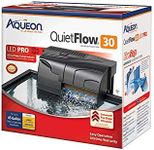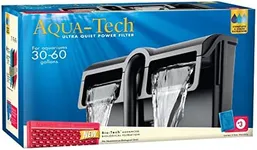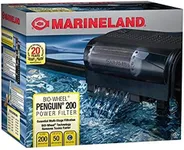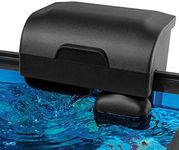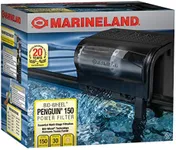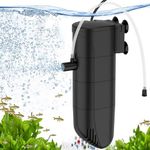Buying Guide for the Best Aquarium Filter 30 Gallon
Choosing the right aquarium filter for your 30-gallon tank is crucial for maintaining a healthy and clean environment for your fish. A good filter will help remove waste, toxins, and debris from the water, ensuring that your aquatic pets thrive. When selecting a filter, consider the type of filter, its flow rate, ease of maintenance, and noise level. Understanding these key specifications will help you make an informed decision and find the best fit for your aquarium.Type of FilterThere are several types of aquarium filters, including hang-on-back (HOB), canister, sponge, and internal filters. Each type has its own advantages and is suitable for different needs. HOB filters are easy to install and maintain, making them a popular choice for beginners. Canister filters offer superior filtration and are ideal for heavily stocked tanks. Sponge filters provide gentle filtration and are great for breeding tanks or tanks with delicate fish. Internal filters are compact and fit inside the tank, making them suitable for small spaces. Choose a filter type based on your tank setup, the type of fish you have, and your maintenance preferences.
Flow RateThe flow rate of a filter, measured in gallons per hour (GPH), indicates how much water the filter can process in an hour. For a 30-gallon tank, a good rule of thumb is to have a filter with a flow rate of at least 4 times the tank volume, which means a minimum of 120 GPH. If you have a heavily stocked tank or fish that produce a lot of waste, you might need a higher flow rate. Conversely, if you have delicate fish or plants that prefer gentle water movement, a lower flow rate might be more suitable. Consider the needs of your tank inhabitants when choosing the flow rate.
Ease of MaintenanceRegular maintenance is essential to keep your filter functioning properly and your tank water clean. Some filters are easier to maintain than others. HOB filters typically have replaceable cartridges that are easy to change, while canister filters may require more effort to clean but offer longer intervals between maintenance. Sponge filters are simple to clean but may need more frequent rinsing. Consider how much time and effort you are willing to invest in maintaining your filter and choose one that fits your lifestyle.
Noise LevelThe noise level of a filter can be an important factor, especially if your aquarium is in a living room or bedroom. Some filters are designed to operate quietly, while others may produce noticeable noise. HOB filters can sometimes be noisy due to water splashing, while canister filters are generally quieter. Sponge and internal filters are usually very quiet. If noise is a concern for you, look for filters that are specifically marketed as quiet or have good reviews regarding their noise levels.

